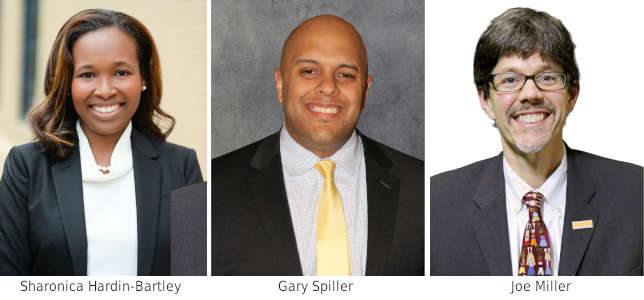Data Supports Social-Emotional and Equity Curricula for 'Whole Child' K– 12 Education
- By Sharonica Hardin-Bartley, Gary Spiller, Joe Miller
- 07/14/21
Parents and
educators know that academic excellence depends considerably on
students’ holistic development and a strong, positive learning
environment. Unfortunately, many schools lack access to the tools
needed to support students’ personal growth and to measure and
reflect on their climate for learning.
Research
shows that social-emotional learning (SEL) programs improve student
success, yet many K–12 schools across the country only measure
academic milestones. In one study,
schools that created strong, supportive environments were at least 10
times more likely to show substantial gains in reading and math
compared to schools with few supports in place.

The SEEAL
Model
Our small, highly
diverse public school district in St. Louis is using data to change
this. At The School District of University City, we developed a unique
approach to integrative learning with a focus on equity and
social-emotional learning, looking at students as a whole person
rather than solely relying on their academic merit.
This approach is
referred to as our SEEAL model, or social-emotional, equitable and
academic learning. Our team focuses on building curriculum and
teaching strategies that include all three areas of learning, which
promotes the wellbeing of students beyond academics.
Over the last
year and a half, paying close attention to the mental health of our
students became increasingly important to ensure they were learning
and thriving in the midst of two pandemics: COVID-19 and heightened
concern about racism.
Often, student
support and academic services are siloed, but our integrative SEEAL
team allows us to incorporate SEL, equity and academic testing to
better inform curriculum and mental health services. We strive to
prepare our students for successful lives through college or
post-secondary career pathways and beyond. Integrating SEL and
equity into every aspect of our schools helps us prepare the whole
student for success after graduation.
Social-Emotional
Learning
To properly
assess the non-academic needs of our students, we use data from
Panorama
surveys that students, staff and some parents complete each semester.
Panorama allows schools to select from more than 50 topics to measure
in the areas of social-emotional learning, student feedback, school
climate and family and community engagement.
This helps us
track the SEL data that isn’t as easy to see and interpret as
academic data. This information is used to identify students who need
more support with non-academic challenges such as self-efficacy,
anxiety and social awareness, while also informing curriculum changes
and teaching strategies to accommodate common needs.
Our wellbeing
specialists, counselors and social workers are tasked with
interpreting the data and reaching out to students and staff to help
provide the best possible supports based on their needs indicated in
the survey results.
One of our
administrators, who is also the parent of one of our students, shared
that the information from their child’s SEL scores has been more
beneficial than their academic testing data. We are working to use
the data we gather on SEL to not only intervene when a student is
scoring low on a certain SEL competency, but also as a preventive
measure to create supports and opportunities for students to prevent
non-academic learning challenges before they arise.
This
administrator expressed that student-level data is imperative to
identify individual student needs, which is much more beneficial than
collective, anonymous results.
Funding for our
Panorama surveys is made possible by The
Opportunity Trust as part of their “Better Measures”
initiative to provide grant funding for public schools to go beyond
academics to measure success. They support schools financially,
allowing them to collect and analyze critical data on
social-emotional development and school culture. The Better Measures
initiative also includes professional development for practitioners
to learn how to interpret the data and make connections with other
districts to share best practices.
Equity
We look at our
curriculum from an SEL and equity framework to move beyond relying on
academic markers to gauge student success. Our equity screener looks
at our curriculum to see if it reflects our student population from
race, gender identity, physical disabilities, socioeconomic status
and more to make sure every student feels that the materials they are
engaging with reflects them.
For history and
English curricula, for example, we determine if our Black student
population is represented in the texts studied, as they account for
80% of our school’s student body. This is often not the case, which
requires us to make adjustments and choose alternate texts. Combing
through our curriculum with this equity screener is a long process
that takes years to complete, but it is well worth it in the pursuit
of ensuring our students feel included in the learning process.
For other schools
hoping to incorporate a similar SEEAL model, an integrated approach
is key. Bring in the voices of diverse educators, administrators,
students and parents to inform decision-making.
Consider
implementing surveys that capture the non-academic needs of your
students, staff and families to identify areas for improvement. Show
in your regular communication with all stakeholders the need to
connect and form relationships. From there, train and dedicate staff
to interpret the data and provide supports for the students and staff
who need it. Incorporating equity into every aspect of curriculum and
teaching strategies is critical to ensuring each student feels
represented and cared for in their learning environment.